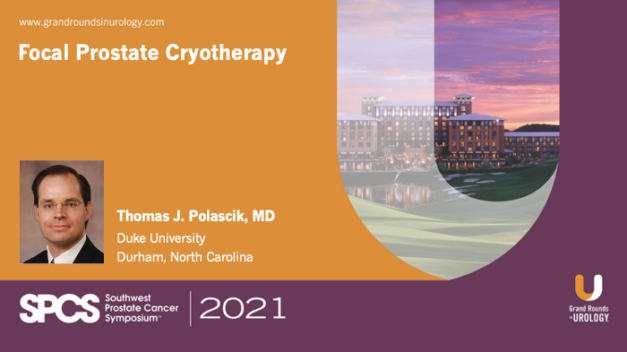How to Utilize MRI for Focal Therapy Planning
Samir S. Taneja, MD, the James M. Neissa and Janet Riha Neissa Professor of Urologic Oncology, Co-Director of the Smilow Comprehensive Prostate Cancer Center, and Vice Chair of the Department of Urology at NYU Grossman School of Medicine, discusses how to use MRI in planning and doing follow-up on focal therapy for prostate cancer. He begins by introducing the critical decisions in focal therapy implementation, including candidate selection, method of disease mapping/identification, choice of energy, and manner of follow-up/verification of efficacy. Dr. Taneja then lists imaging-related factors influencing oncologic efficacy including tumor size/extent, tumor location, focality, energy source, and gland size. He considers biopsy vs. MRI in treatment planning, explaining that systematic biopsy is inadequate for mapping disease, transperineal template biopsy is the gold standard, and MRI/MRI-targeted biopsy is not perfect, but very good. Dr. Taneja notes that MRI misses some clinically significant cancer, but observes that a 9 to 10 millimeter MRI/MRI-targeted biopsy guided focal ablation seems to identify all the index tumors. He also goes over imaging factors such as disease location and volume affect the choice of energy selection for focal therapy. Dr. Taneja then considers the benefits of imaging post partial gland ablation, explaining that very early imaging evaluates the anatomy of ablation but not its efficacy, intermediate interval imaging guides biopsy and identifies need for retreatment, delayed imaging identifies recurrence. He also briefly discusses the use of PET in cases where MRI does not detect recurrence. Dr. Taneja concludes that MRI has the ability to localize the index tumor, that margin considerations should take into account the known limitations of MRI in disease mapping, and that MRI remains the essential mainstay for monitoring following focal ablation.
Read More

